#grisebach
Photo
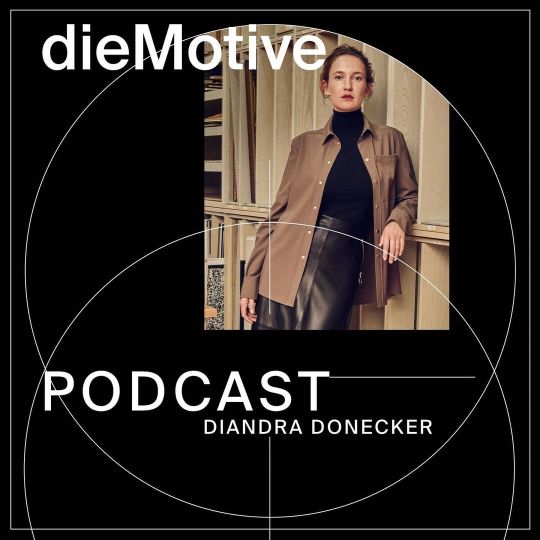
Die neue Podcastfolge ist online. Ein Gespräch mit @diandradonecker über ihre Position im Auktionshaus Grisebach @grisebach_ , ihren Werdegang, das Verkaufen von Fotografien, August Sander und über die persönliche Entscheidung, welche Bilder an die heimischen Wände kommen. Eine Podcastepisode mit einem schönen Ende. Diandra Donecker arbeitet seit 2017 bei Grisebach, Berlin. Zunächst als Leitung der Abteilung für Photographie, ab 2019 als CEO und Partner. Jetzt auf diemotive.de und überall wo es podcasts gibt. Foto: @markusjans #diandradonecker #diemotive #podcast #fotopodcast #fotoauktion #auktionshaus #grisebach #fotografieverkaufen #augustsander #fotomarkt #fraueninfuehrungspositionen #ceo #fotografie https://www.instagram.com/p/CKVw-bbHzPX/?igshid=NGJjMDIxMWI=
#diandradonecker#diemotive#podcast#fotopodcast#fotoauktion#auktionshaus#grisebach#fotografieverkaufen#augustsander#fotomarkt#fraueninfuehrungspositionen#ceo#fotografie
0 notes
Text

Happy 56th, Valeska Grisebach.
Illustration by Monica Barengo.
5 notes
·
View notes
Text



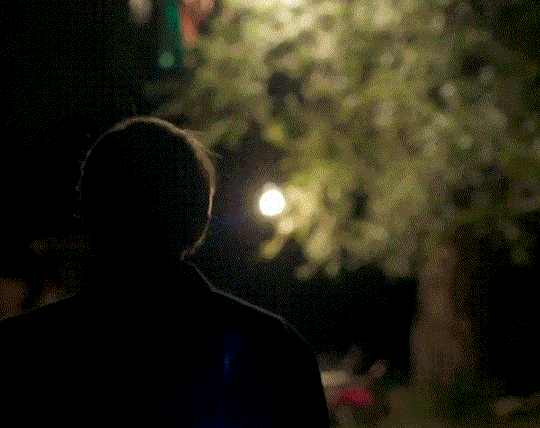

Western (2017) dir. Valeska Grisebach
3 notes
·
View notes
Text

Gentle understanding.
Valeszka Grisebach's gorgeous, gentle (my favourite word this year, it seems), brilliant Western, 2018.
0 notes
Text
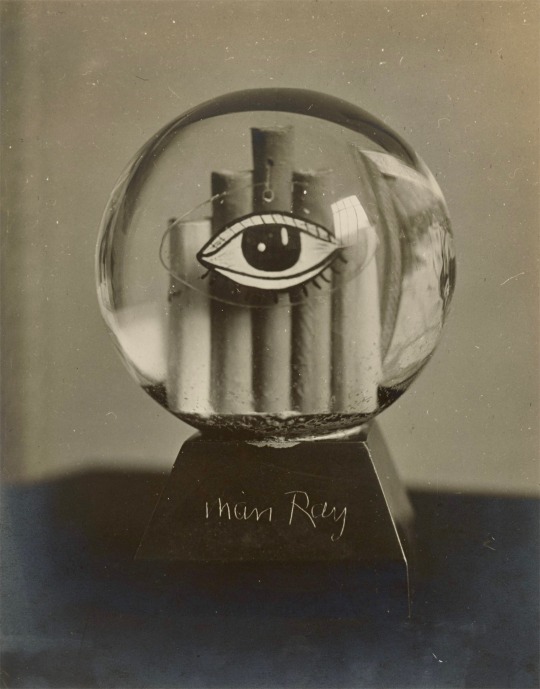
Man Ray
Philadelphia 1890 - 1976 Paris
PSnowball. 1927
Vintage. Gelatin silver print.
Grisebach
287 notes
·
View notes
Text
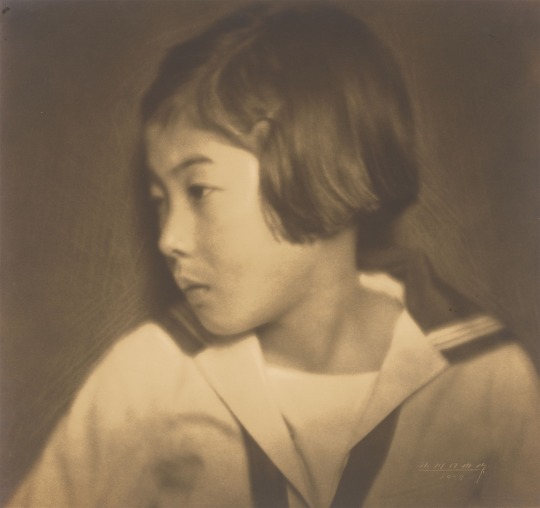
Ogawa Gesshu ~ Gesshū Ogawa :: Mädchen in Schuluniform, 1928. Los 211-1 | src Grisebach Auktionen
View more on wordPress
#bromide print#gesshu ogawa#half profile#japanese photographer#Ogawa Gesshu#Ogawa Yasusaburo#pictorialism#pictorialisme#pictorialismo#1920s#Piktorialismus#pictorialist portrait#pictorial portrait#portrait#Porträt#retrato#ritratto#portret#retrat#Bildnis#girl#Mädchen#uniform#Schuluniform
30 notes
·
View notes
Text
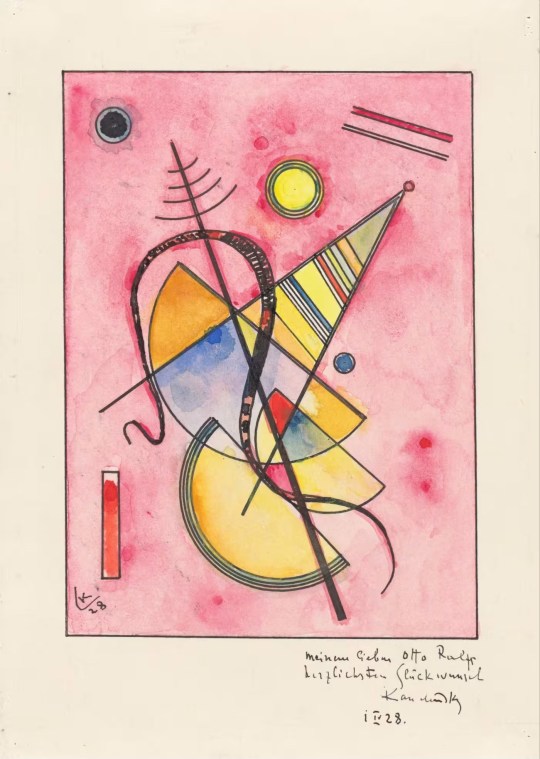
Wassily Kandinsky, ‘Untitled’ (1928) :: [Robert Scott Horton]
* * * *
Imogen Savage: Housed in a 19th-century listed mansion that stretches skyward into spires, the Grisebach auction house gives off the disquieting charm of a German fairytale castle. Outside runs Fasanenstrasse, a leafy street of galleries and skincare boutiques in one of Berlin’s chicest corners. On December 1 2022, Marcin Król, the Polish consul in Berlin, climbed the steps to the building for the evening sale beginning at 6pm. A number of impressive modern artworks were on offer, including a sought-after self-portrait in oil by Max Beckmann. But it was Lot No 31, “Untitled”, a little pink Wassily Kandinsky watercolour from 1928, that had Król’s attention that evening. Król was not at Grisebach as a buyer. Earlier that day he had sent the auction house a message demanding it stop the sale of the Kandinsky. In the hours since, representatives at Grisebach had reviewed the legal status of the artwork and its right to be sold by Inga Maren Otto, a German billionaire and philanthropist. Their decision was clear. They would proceed. At 4.40pm, Król took to Twitter, quoting the message he’d sent to Grisebach. “Withdraw[ing] the painting from the auction,” he wrote, “[was] the only correct and moral action in this situation . . . The provenance/history of the painting stated [in the catalogue] is clear . . . the painting has ownership markings indicating its origin from the National Museum in Warsaw. [It has been registered] from the Polish side in Interpol’s database of stolen works of art.” He finished the thread with an update: “The auction house has not yet stopped selling the work. As of 4.50pm.”
Król watched on a TV screen in the corner of an anteroom as the auction began. Lot No 31 eventually appeared on the screen. Flattened by the glowing pixels, the original aqueous colours took on neon tones. There was a faint scribble underneath in Kandinsky’s handwriting. After a flurry of bids, more than doubling the upper reserve price, the hammer came down. Afterwards, Król posted a photo to Twitter with a solemn summary of what he had witnessed. It read like both the beginning and the end of an art-crime story: “Grisebach sold Kandinsky’s watercolour [“Untitled”] for €310,000. The painting was stolen in 1984 from the National Museum in Warsaw.” Then the Berlin police showed up at the auction house, in response to a report of a stolen artwork being sold on the premises. Król’s message that day was, said Grisebach in a statement issued after the event, the first they’d learnt of the theft.
I heard about the auction of the Kandinsky watercolour some weeks later. I was intrigued by this little work on paper, the size of which is hard to gauge when viewed online. A cluster of geometric shapes and coloured washes not much bigger than a postcard, it’s not a famous piece and was never supposed to be. The personalised dedication at the bottom provides a clue as to its original, more intimate context. Through Król’s media offensive, I began to imagine the painting in its previous lives. A valued artwork can do this; move through history like a time traveller who has seen it all, changing hands, changing walls, changing in value, picking up a few marks and scuffs, but remaining, on the surface, itself. It’s easy to forget that many of the works of art we see today have somehow weathered revolutions, wars and genocide. During and after the second world war, art collections dispersed like breadcrumbs in the mouths of sparrows. Since that time, art dealers and auction houses have continued to sell these works, right up to the present day, with values soaring.
As I began to trace the Kandinsky’s journey, I discovered the story had deeper roots than even Król had imagined. The watercolour wasn’t stolen once but twice. Having survived the Nazi party’s confiscations of modern art in the 1930s, it languished in a depot in occupied Poland before travelling back and forth across the world via private and public sales as the lines between black market and art market blurred postwar. As the trail grew more convoluted, my questions multiplied. How was it possible, I wondered, that a piece of art that we know was once stolen from a major European museum could now be sold, perfectly legally, by an important German auction house? And who, in the chain of ownership spanning nearly a century, is the rightful owner of Lot No 31? In his Dessau studio in 1928, Wassily Kandinsky sat before a small sheet of thick paper. He drew in ink, a balance of precisely placed interlocking semicircles, triangles and floating circles, with a more irregular snakelike mark through the centre. Then he dragged his paintbrush across some watercolour pans, applying the colours to the interior of the shapes in blues, yellows and reds, and washing the surround in pink. The watery paint pooled in different areas, variegating the intensity of the colour where it settled. Then it dried, locking the painting into position. At the bottom, in pencil, the artist wrote: “Meinem lieben Otto Ralfs, herzlichsten Glückwunsch, Kandinsky I IV 28” [“To my dear Otto Ralfs, Happy Birthday, Kandinsky, 1 April 28”]. It was a gift, made for his friend and patron on the occasion of his 36th birthday. Kandinsky’s studio was in a row of identical semi-detached houses located in a pine forest at the edge of town, where artist-professors lived and worked. This was the vision of Walter Gropius, founder of the influential modernist art and design school the Bauhaus, who designed the Dessau “Masters’ Houses” in 1925 to fit his concept of gesamtkunstwerk, or total artwork. Kandinsky lived at No 6, next door to the Swiss-German artist Paul Klee. The day I visited earlier this summer, the sunny weather was heating the pines, filling the air with the same calm, sweet smell that Kandinsky, then in his late fifties, and the younger Klee would have breathed as they sat drinking tea together in the garden.
Inside, the thick, shiny paint was fresh from recent restoration work, distracting the senses from conjuring their presence. The artists’ studios, the largest rooms in their carefully designed houses, shared a wall. From the front, an enormous horizontal window frames the central focus of the house, the parallel studios in which they worked, taught and held salons: Kandinsky on the left, Klee on the right. Otto Ralfs and his wife Käte bought their first works by Klee when they visited the Bauhaus in Weimar in September 1923. After that, their lives changed completely. The couple didn’t have a lot of money. He worked as an insurance salesman and owned a shop in his hometown, Braunschweig, in northern Germany. She was a paediatric nurse. But they were among the first people to see the value in the art being produced at the Bauhaus. At one point, they had the largest collection of Klees, and the second-largest collection of Kandinskys after Solomon R Guggenheim.
[Financial Times]
8 notes
·
View notes
Text

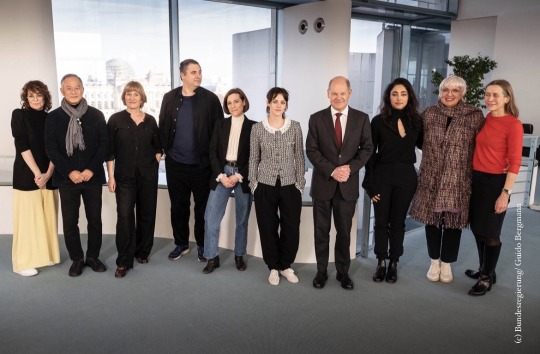


First looks of the international jury president Kristen Stewart along with the jury members Golden Bear winner Radu Jude, German filmmaker Valeska Grisebach, Spanish director Carla Simón, Francine Maisler, legendary Hong Kong icon Johnnie To, Iranian/French actor Golshifteh Farahani.
Federal Chancellor Olaf Scholz and Minister of State for Culture Claudia Roth welcomed the international jury to the Chancellery.
Photo: © Dirk Michael Deckbar / Berlinale 2023.
14 notes
·
View notes
Text

Otto Dix, Selbstbildnis, 1913 Grisebach
5 notes
·
View notes
Photo

Braunes Meer mit Möwen = Brown Sea with Seagulls
Max Beckmann (German; 1884–1950)
Amsterdam, 1941
Oil on canvas
Grisebach, Berlin
#Max Beckmann#Beckmann#sea#seas#1940s#German art#German artists#German painters#German paintings#Expressionism#German Expressionism#German Expressionists#seagulls#boats#beach#beaches#birds#storms waves#whitecaps#1940s German art#artists in exile#sails#winds#seashores#sea foam#beach scenes#sailing boats
6 notes
·
View notes
Text
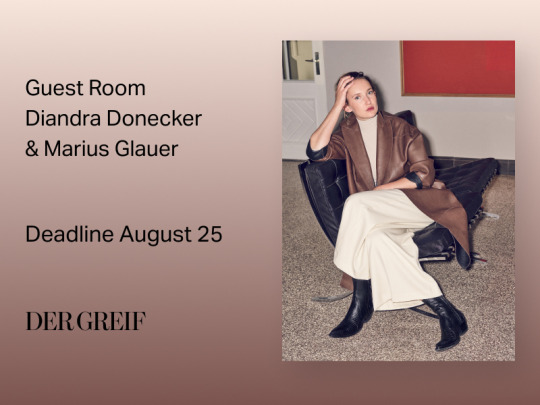
Guest Room aims to spark collaboration. Diandra Donecker, managing director and partner at the art auction house Grisebach, has decided to collaborate with the artist Marius Glauer.
The two have developed the following framework for your submissions:
CHARACTERS OF RESONANCE
"If acceleration is the problem, then resonance may well be the solution." *
*Hartmut Rosa, Resonance. A Sociology of Our Relationship to the World, translated by James C. Wagner, Polity Press, Cambridge 2019 (ebook version), p. 19.
In this book, Hartmut Rosa, professor at the University of Jena and one of Germany's most important sociologists, presents an approach to solving the civilizational crises of our time: his critical diagnosis is that the crises of our world are leaving us less and less time and space to feel at home as human beings in resonant (world) relationships.
4 notes
·
View notes
Text

Happy 55th, Valeska Grisebach.
12 notes
·
View notes
Text
Mit Herz und Holly
Mit Herz und Holly (Serie 2023)
#InkaFriedrich #KarolineTeska #MaxWoelky #ChristianNäthe #JoachimRaaf #ChristianGerling
Mehr auf:
Serie Jahr: 2023-
Genre: Krimi / Drama / Romantik
Hauptrollen: Inka Friedrich, Karoline Teska, Max Woelky, Christian Näthe, Joachim Raaf, Christian Gerling, Sabine Falkenberg, Polina Shmal, Anna Grisebach, Simona Theoharova, Birge Schade, Ercan Durmaz, Ina Hout, Elvis Clausen …
Serienbeschreibung: Vor der Dorfarztpraxis von Dr. Katrin Herz stellen sich die Patienten Schlange. So kann es nicht…
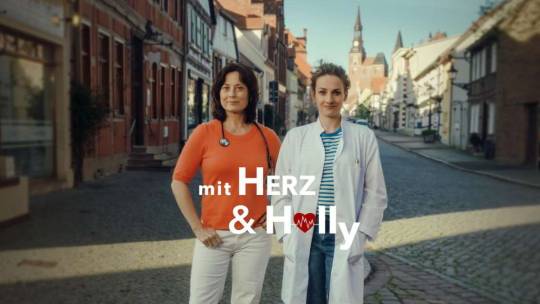
View On WordPress
0 notes
Text
M&A Activity in Art Auction Market to Set New Growth Cycle

Advance Market Analytics added research publication document on Worldwide Art Auction Market breaking major business segments and highlighting wider level geographies to get deep dive analysis on market data. The study is a perfect balance bridging both qualitative and quantitative information of Worldwide Art Auction market. The study provides valuable market size data for historical (Volume** & Value) from 2018 to 2022 which is estimated and forecasted till 2028*. Some are the key & emerging players that are part of coverage and have being profiled are China Guardian (China), Christie's (United Kingdom), Phillips de Pury& Company (United States), Poly Auction (Hong Kong), Sotheby's (United States), Artcurial (France), Artsy (United States), Beijing Council International Auction Company (China), Bonhams (United Kingdom), Bruun Rasmussen (Denmark), DESA Unicum (Poland), Dorotheum (Austria), Doyle (United States), Grisebach (Germany).
Get free access to Sample Report in PDF Version along with Graphs and Figures @ https://www.advancemarketanalytics.com/sample-report/137873-global-art-auction-market
An art auction is the sale of art led by an auctioneer, most commonly held in auction houses, which have different locations around the world. An art auction is planned often months in advance, with a fixed line-up of works available for sale; these are presented in an auction catalog that potential collectors peruse before the big day. Then, as in all auctions, registered bidders raise their paddles, call their advisors, and feel their heart rates rise before the auctioneer’s hammer finally hits the block.
Keep yourself up-to-date with latest market trends and changing dynamics due to COVID Impact and Economic Slowdown globally. Maintain a competitive edge by sizing up with available business opportunity in Art Auction Market various segments and emerging territory.
Influencing Market Trend
Experiencing Art & its Backstory
Female Artists Gain Ground
Advancement in auction services techniques
Market Drivers
Art Gains Popularity as Investment
Growth of New Wealth
Evolving Art Appreciation
Opportunities:
Advent of Online Auction Services to Connect People Easily
Growing Recognition of Artists on Digital as well as Physical Platforms
Challenges:
Challenges Linked with the Various Fraud Functionality
Have Any Questions Regarding Global Art Auction Market Report, Ask Our Experts@ https://www.advancemarketanalytics.com/enquiry-before-buy/137873-global-art-auction-market
Analysis by Type (Online, Offline), Application (Painting Art, Ceramic Art, Others)
Competitive landscape highlighting important parameters that players are gaining along with the Market Development/evolution
• % Market Share, Segment Revenue, Swot Analysis for each profiled company [China Guardian (China), Christie's (United Kingdom), Phillips de Pury& Company (United States), Poly Auction (Hong Kong), Sotheby's (United States), Artcurial (France), Artsy (United States), Beijing Council International Auction Company (China), Bonhams (United Kingdom), Bruun Rasmussen (Denmark), DESA Unicum (Poland), Dorotheum (Austria), Doyle (United States), Grisebach (Germany)]
• Business overview and Product/Service classification
• Product/Service Matrix [Players by Product/Service comparative analysis]
• Recent Developments (Technology advancement, Product Launch or Expansion plan, Manufacturing and R&D etc)
• Consumption, Capacity & Production by Players
The regional analysis of Global Art Auction Market is considered for the key regions such as Asia Pacific, North America, Europe, Latin America and Rest of the World. North America is the leading region across the world. Whereas, owing to rising no. of research activities in countries such as China, India, and Japan, Asia Pacific region is also expected to exhibit higher growth rate the forecast period 2023-2028.
Table of Content
Chapter One: Industry Overview
Chapter Two: Major Segmentation (Classification, Application and etc.) Analysis
Chapter Three: Production Market Analysis
Chapter Four: Sales Market Analysis
Chapter Five: Consumption Market Analysis
Chapter Six: Production, Sales and Consumption Market Comparison Analysis
Chapter Seven: Major Manufacturers Production and Sales Market Comparison Analysis
Chapter Eight: Competition Analysis by Players
Chapter Nine: Marketing Channel Analysis
Chapter Ten: New Project Investment Feasibility Analysis
Chapter Eleven: Manufacturing Cost Analysis
Chapter Twelve: Industrial Chain, Sourcing Strategy and Downstream Buyers
Read Executive Summary and Detailed Index of full Research Study @ https://www.advancemarketanalytics.com/reports/137873-global-art-auction-market
Highlights of the Report
• The future prospects of the global Art Auction market during the forecast period 2023-2028 are given in the report.
• The major developmental strategies integrated by the leading players to sustain a competitive market position in the market are included in the report.
• The emerging technologies that are driving the growth of the market are highlighted in the report.
• The market value of the segments that are leading the market and the sub-segments are mentioned in the report.
• The report studies the leading manufacturers and other players entering the global Art Auction market. Thanks for reading this article; you can also get individual chapter wise section or region wise report version like North America, Middle East, Africa, Europe or LATAM, Southeast Asia.
Contact US :
Craig Francis (PR & Marketing Manager)
AMA Research & Media LLP
Unit No. 429, Parsonage Road Edison, NJ
New Jersey USA – 08837
Phone: +1 201 565 3262, +44 161 818 8166
[email protected]
#Global Art Auction Market#Art Auction Market Demand#Art Auction Market Trends#Art Auction Market Analysis#Art Auction Market Growth#Art Auction Market Share#Art Auction Market Forecast#Art Auction Market Challenges
0 notes

